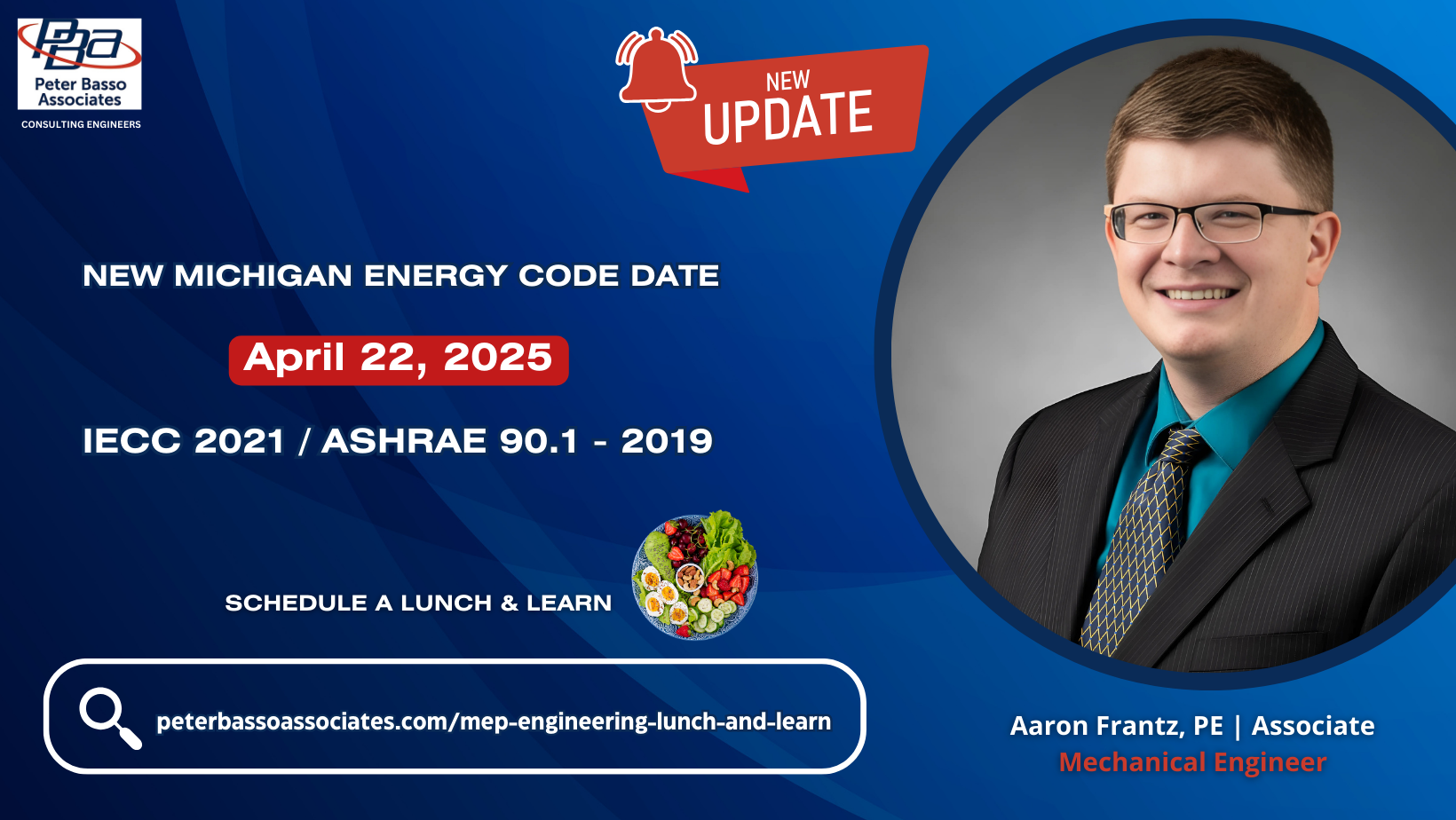
Welcome to week 6 of PBA's blog series on the coming updates to the Michigan Energy Code! We're covering essential updates in the new Michigan Commercial Energy Code (based on ASHRAE 90.1-2019) before the adoption date on April 22, 2025. Click here if you've missed our previous posts!
If you’re looking to make a building more energy efficient, where do you look first? The walls? The HVAC equipment? The lighting? These are all plausible measures, and at PBA we assess all these elements during the design of a building. But that’s just it – they’re set during the DESIGN of a building. A building designed to be energy efficient will only live up to that potential if it is BUILT and OPERATED in consideration of those efficient designs. ASHRAE research has revealed that closing the gap between efficient design and efficiency after installation is among the lowest-hanging energy-conservation-fruit, and to achieve this has significantly strengthened commissioning requirements of 90.1-2019.
According to ASHRAE Standard 0-2019, “[the] Commissioning Process is a quality-focused process for enhancing the delivery of a project by achieving, validating, and documenting the performance of facility elements in meeting the owner’s objectives and criteria.” This process includes both verifying that the design was installed correctly (eg: ensuring that equipment of specified efficiency was provided), and Functional Performance Testing of the installed systems (eg: ensuring that variable speed systems actually vary their speed). As part of our commitment to whole building excellence, Peter Basso Associates has a Commissioning Group, independent of our design team, which has long been delivering these validation services for projects designed by both PBA and other firms.
The outgoing Michigan Energy Code requires that projects over 50,000ft2 undergo formal commissioning to achieve the energy benefits described above but provides near-zero definition about what “commissioning” actually entails. The 2025 Michigan Commercial Energy Code lowers this threshold to 10,000ft2 and provides clarity about what the commissioning process needs to look like. From the perspective of PBA’s Commissioning Group, these changes are scarcely that – they represent a requirement to follow best practices which have been our standard commissioning practices for years. For others, the new Code provides a clear path forward for filling important gaps in their commissioning procedures.
One facet of the commissioning requirements is pretty new for ASHRAE 90.1-2019: Envelope Commissioning. See the Week #4 blog post for details about that. Everything else is the commissioning you’re familiar with, only more formally prescribed in the new Appendix H. HVAC systems, lighting systems, domestic water heating, etc…
One of the core tenets of Commissioning (and clarified as a requirement by the new 90.1-2019) is that it must be by a third-party group – that is, by neither the contractor nor the designer. Conflicts of interest may exist if the parties responsible for having designed and constructed the building are then asked to validate that the designs are appropriate, and the building is constructed properly! Peter Basso Associates’ Commissioning Group works independently from its design teams, and thus is allowed to operate as the Commissioning Agent on PBA projects. PBA’s Commissioning Group works on a variety of projects, both designed in-house and by other firms, including Hudson’s Detroit and the Gordie Howe International Bridge.
Building Owners should ensure that their design or construction contracts carry requirements to hire a third-party commissioning subconsultant, or should issue completely separate contracts to a Commissioning Agent. Owners should further expect to be provided with the Commissioning Agent’s reports for both Verification and Functional Testing.
Next week, we’ll start discussing some big electrical changes coming to the Energy Code.
These Stories on ASHRAE